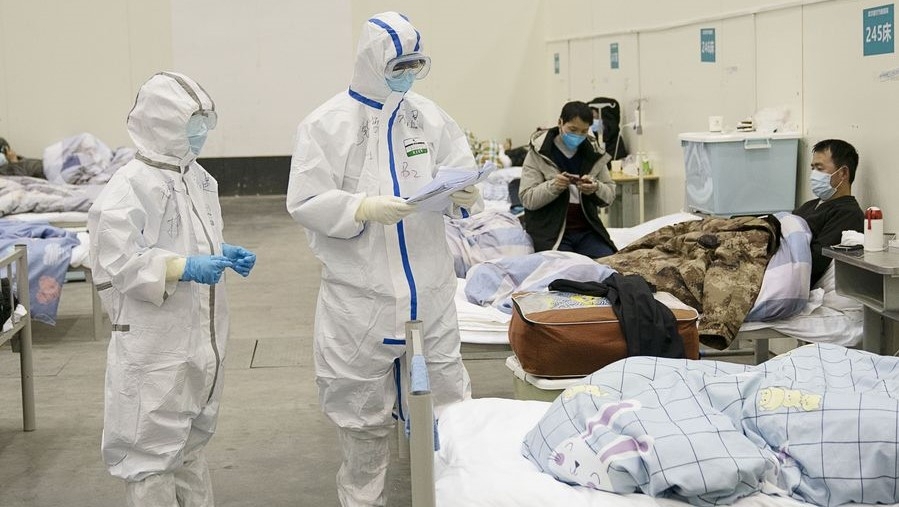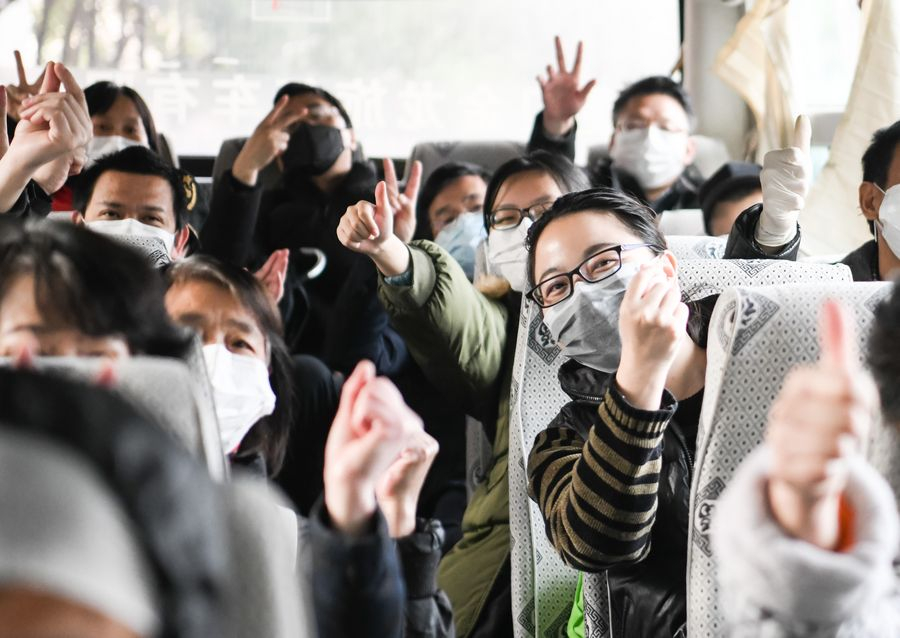05:21

China's COVID-19 prevention and control efforts have turned the tide of the battle against the epidemic, but the country has pledged to continue the fight until complete victory. The effectiveness of China's playbook is drawing more and more worldwide attention.
Wuhan in the early days of the outbreak
By January 20, a total of 224 COVID-19 cases had been reported, 198 of which were in Wuhan City. Three days later, the city was placed on lockdown to contain the spread of the disease.

Medical workers check a patient's condition at a temporary hospital called Wuhan Livingroom in Wuhan, central China's Hubei Province, February 10, 2020. /Xinhua
Medical workers check a patient's condition at a temporary hospital called Wuhan Livingroom in Wuhan, central China's Hubei Province, February 10, 2020. /Xinhua
"The Chinese people are now fighting a very serious battle against the epidemic," Chinese President Xi Jinping told visiting World Health Organization (WHO) Director-General Tedros Adhanom Ghebreyesus on January 28, adding that people's safety and health always come first, and thus the prevention and control of the virus are the country's most important tasks.
The country mobilized all of its resources to stem the spread of the virus, with the Chinese people showing great commitment to collective action in the face of the common threat.

Workers convert Wuhan International Conference and Exhibition Center into a temporary hospital in Wuhan, February 4, 2020. /Xinhua
Workers convert Wuhan International Conference and Exhibition Center into a temporary hospital in Wuhan, February 4, 2020. /Xinhua
The first batch of medics from outside Hubei Province was assigned to help Wuhan on January 24 and 450 military medics also arrived the same night. The People's Liberation Army (PLA) Air Force also arranged 30 transport aircraft to carry out delivery missions.
So far, 346 medical teams composed of 42,000 people have been sent to Hubei Province. The PLA has also dispatched more than 4,000 medics.
It's all about speed. Huoshenshan Hospital, Leishenshan Hospital, 46 designated facilities and 14 temporary hospitals with over 13,400 beds have been put into use during a short time.

Community workers use a speaker to publicize information about prevention and control of the novel coronavirus on a street near the Yellow Crane Pavilion, Wuhan, February 7, 2020. /Xinhua
Community workers use a speaker to publicize information about prevention and control of the novel coronavirus on a street near the Yellow Crane Pavilion, Wuhan, February 7, 2020. /Xinhua
Community-based prevention and control played a critical role during the tough war. In Wuhan, about 40,000 government officials, staff members and Communist Party of China (CPC) members were assigned to work in more than 3,000 communities and 7,000 residential areas.
Wuhan will win, Hubei will win, and China will win
The war is tough and difficult. Over 3,000 medics in Hubei Province were infected with COVID-19 and some even laid down their lives. Luckily, China's epidemic prevention and control situation continues to improve, recording major breakthroughs.
As of Thursday, March 13, 21 provincial-level regions and the Xinjiang Production and Construction Corps had seen no new indigenous cases for more than 14 days, while six provincial-level regions had reported no new indigenous cases for more than a week.

Recovered patients on a bus going back home after a 14-day quarantine for medical observation at a rehabilitation center, Wuhan, March 10, 2020. /Xinhua
Recovered patients on a bus going back home after a 14-day quarantine for medical observation at a rehabilitation center, Wuhan, March 10, 2020. /Xinhua
"You are all wearing protective suits and masks. I can't see your faces, but you are the most adorable people in my heart!" President Xi told medics during a visit to Wuhan on March 10 and encouraged them by saying, "Wuhan will win, Hubei will win, and China will win!"






